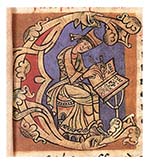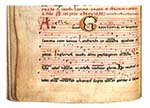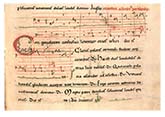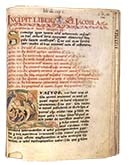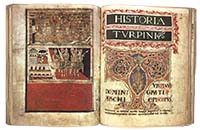Codex Calixtinus de la Catedral de Santiago de Compostela
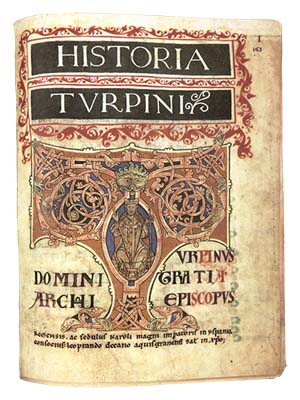
This 12th-century manuscript, housed at Santiago de Compostela in Spain, goes by several names: Codex Calixtinus, Liber Sancti Jacobi, or Jacobus. It consists of five books:
Book I contains sermons and liturgy (including chants) in honor of St. James (“Santiago”). It also includes a letter fictitiously attributed to Pope Calixtus II (for whom the codex is named).
Book II tells of the twenty-two miracles of St. James.
Book III describes the moving of St. James’ body from Jerusalem to Compostela.
Book IV, known as the “Chronicle of Turpin,” is a history of Charlemagne. It was falsely attributed to Turpin, the Archbishop of Reims. For this reason it is sometimes known as the “Pseudo-Turpin.”
Book V is one of the most interesting aspects of this codex. Called the “Liber Peregrinationis” (“Guide of the Pilgrim”), it is essential a tourist’s guide to Europe, containing detailed descriptions of the roads, villages, and people on the way to Santiago de Compostela. The appendix to this book includes 20 polyphonic works.
The variety of information contained within the Codex Calixtinus makes it a valuable witness to the history and culture of the medieval world, and a valuable resource for the scholar. We are fortunate to have a faithful reproduction of this manuscript, one of a limited edition of 845.
(Click on each image to enlarge. Image will open in a new window.)

